For World Environment Day, we look at the successful story behind the waterless garden in the city of Sharjah and take the opportunity to hear from Elisa Gatto – environmental biologist, expert in urban vegetation, climate change adaption strategies and land productivity – and Mattia Donato, AKT II associate, on ways to synergistically produce clean energy and food.
It is no secret that there is no planet B. It is imperative that we act now to support a transition towards a sustainable future, which we can do by learning from the past. Designed in collaboration with Cooking Sections, the waterless garden in Sharjah, UAE, resembles the picón in Lanzarote, manmade grooves that maximise the amount of night condensation absorbed by the plants and minimise the adverse impact of the wind.
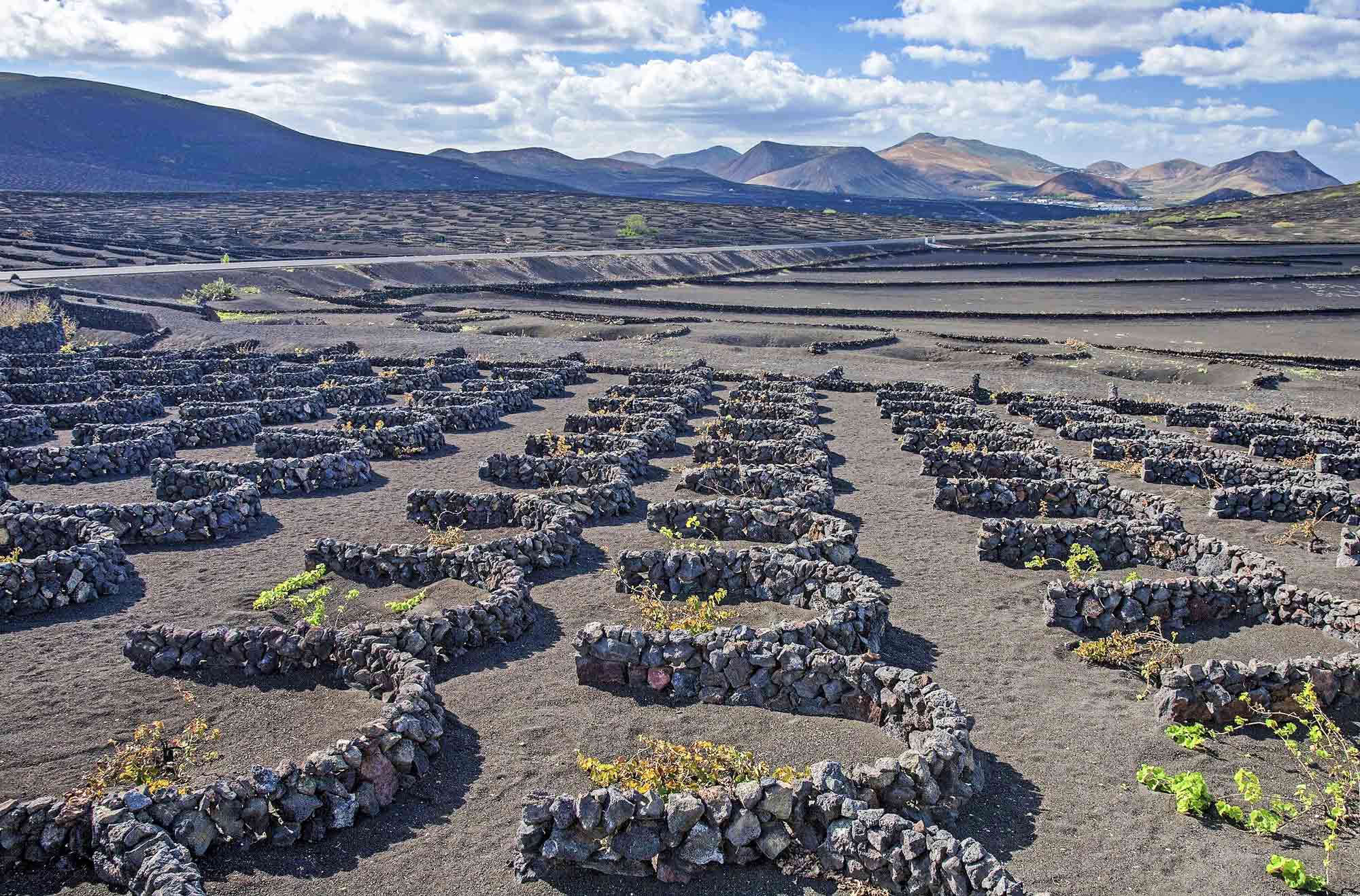
Picón basins in Lanzarote.
On Sharjah, we helped define the landscape strategy, assessing how wind and sunlight interacted with the plants and planters. They reduced exposure to wind, provided by architectural integrated solutions, unlocks greater water absorption and nurtures the plants. The results in only one year after the installation can be seen on the image below.
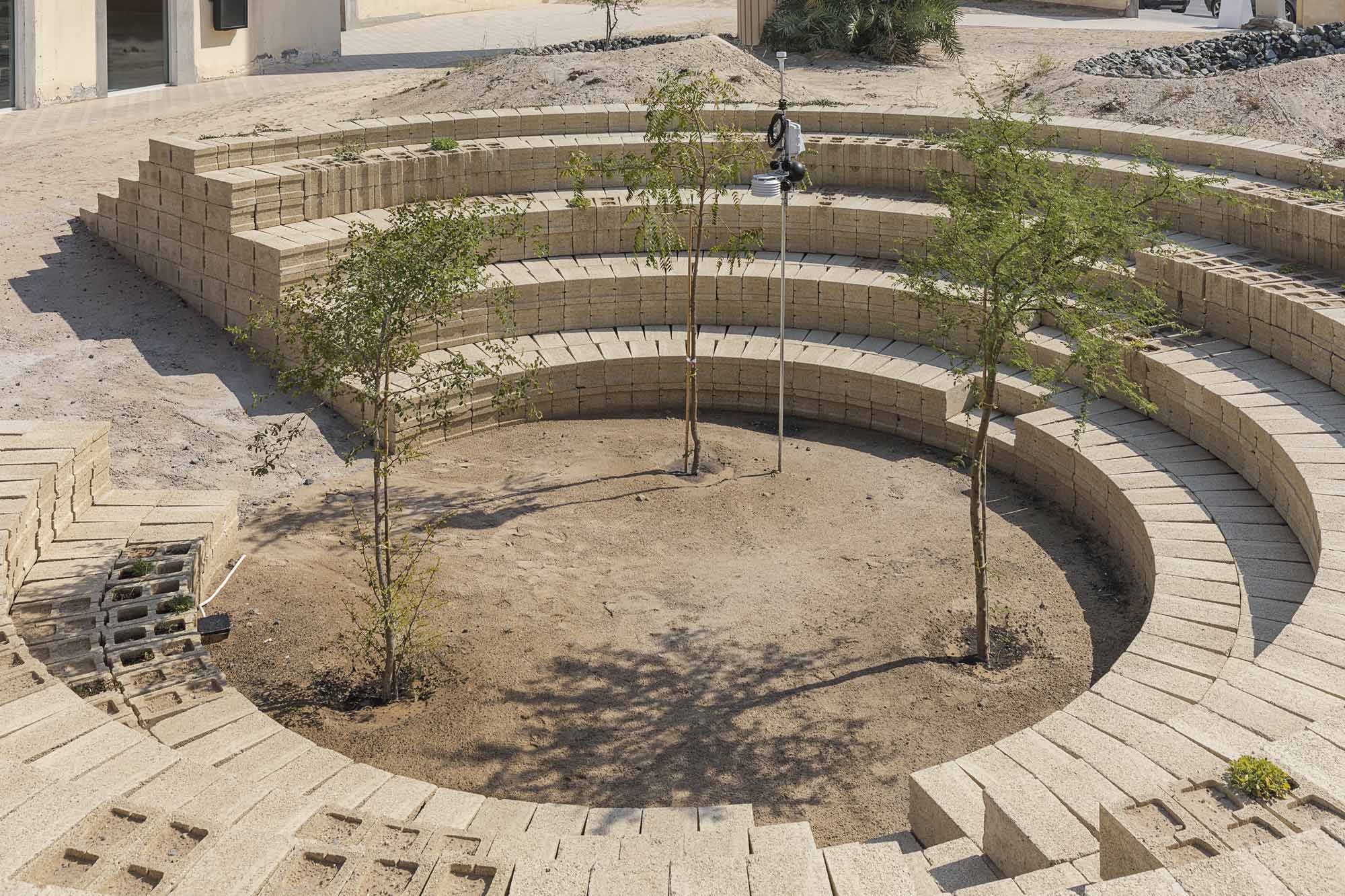
Vegetation at the beginning of the project.
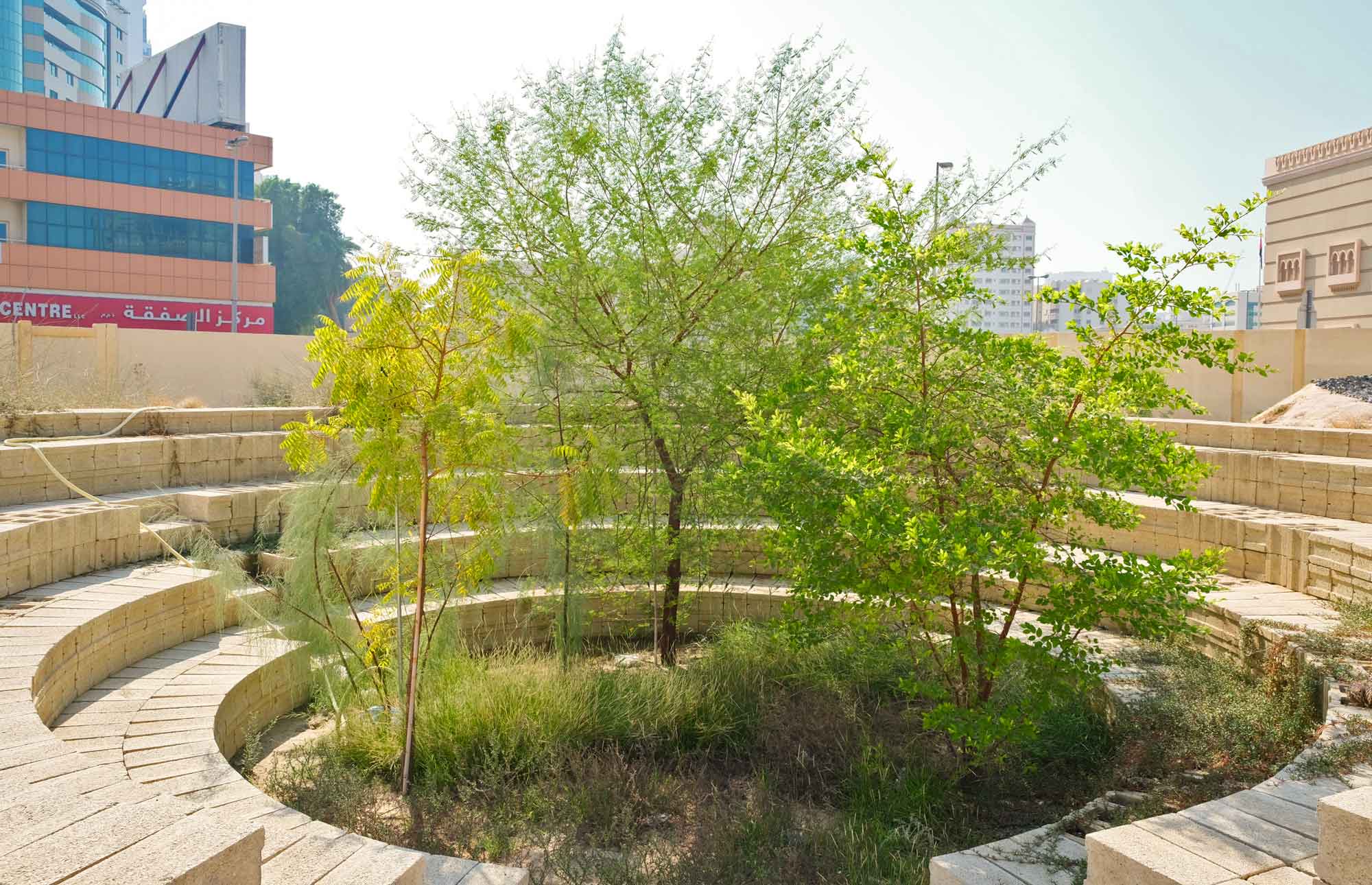
Sharjah Triennial site after only one year
The design of these waterless gardens was supported by our bioclimatic tool, linking wind microclimate and illuminance studies, as shown in the figures below.
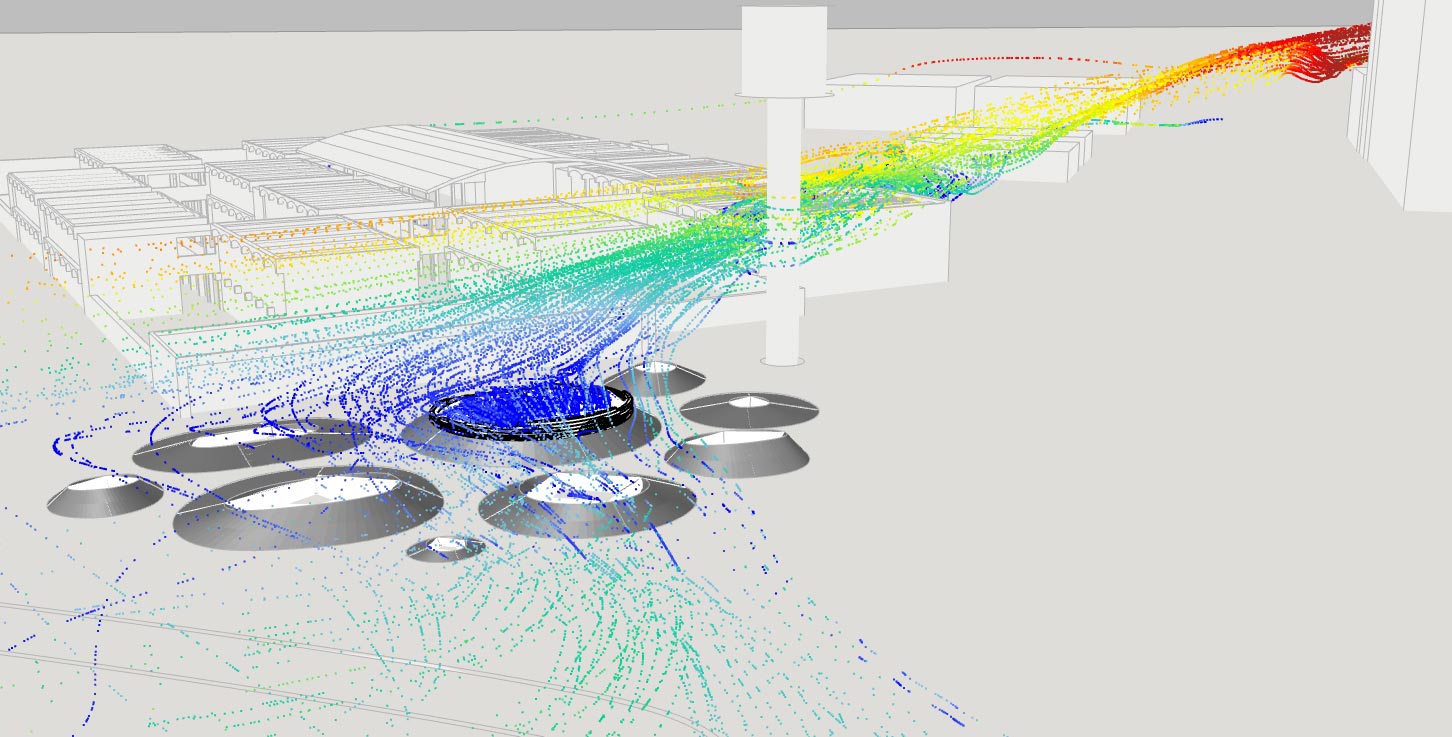
Computational Fluid Dynamics (CFD) – Streamlines from north
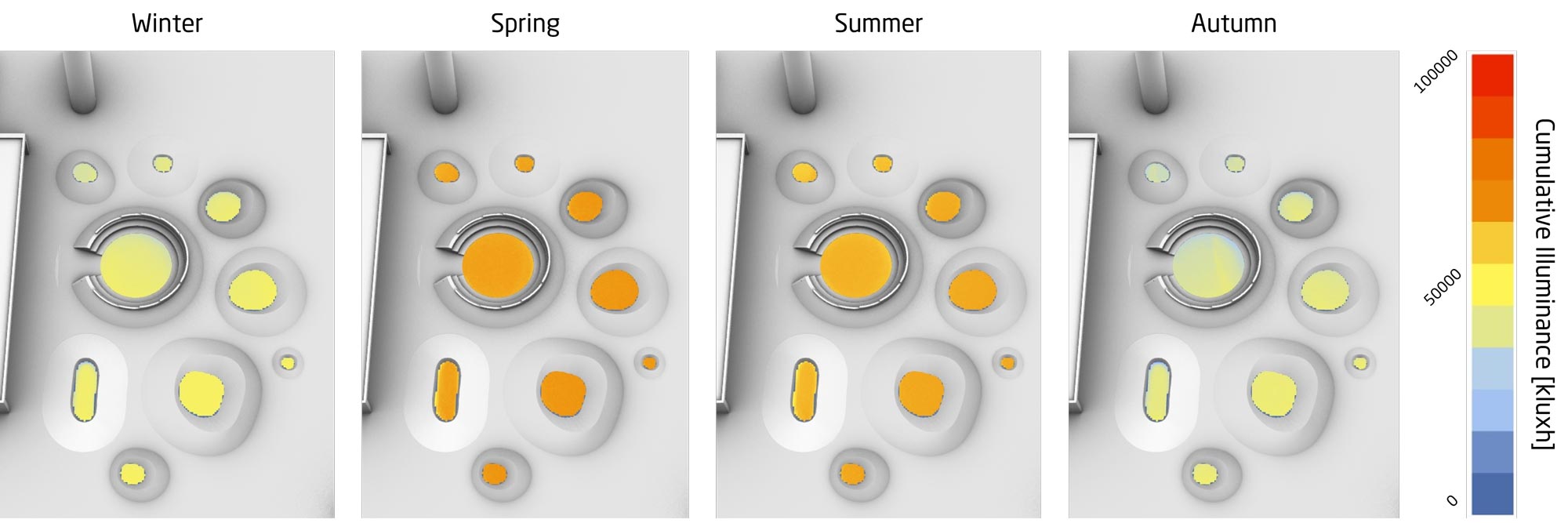
Cumulative luminance level.
We have also been monitoring different variables in four locations, to help us understand the growth rate of the plants and link several parameters. In particular, air temperature, relative humidity, solar radiation, wind speed, wind direction, leaf wetness, soil moisture and rainfall are recorded, and results are available online, so that the entire design team can assess the data.
This project represents the first step towards robust green infrastructure in places where due to the local weather conditions, vegetation has never been properly considered. By reintroducing local plants, and supporting their growth through design, entire cities could soon transform into resilient urban environments.
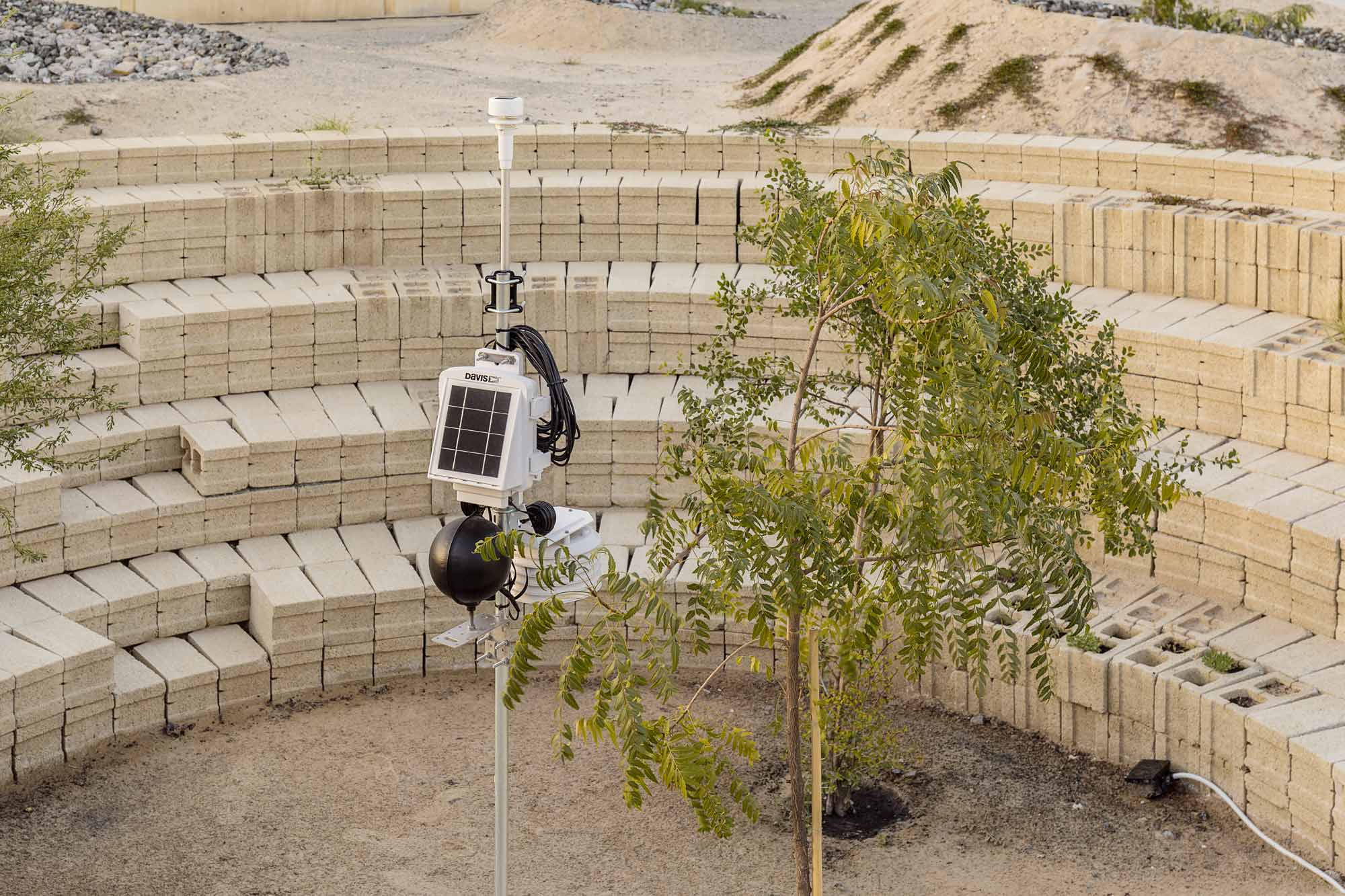
On-site monitoring stations
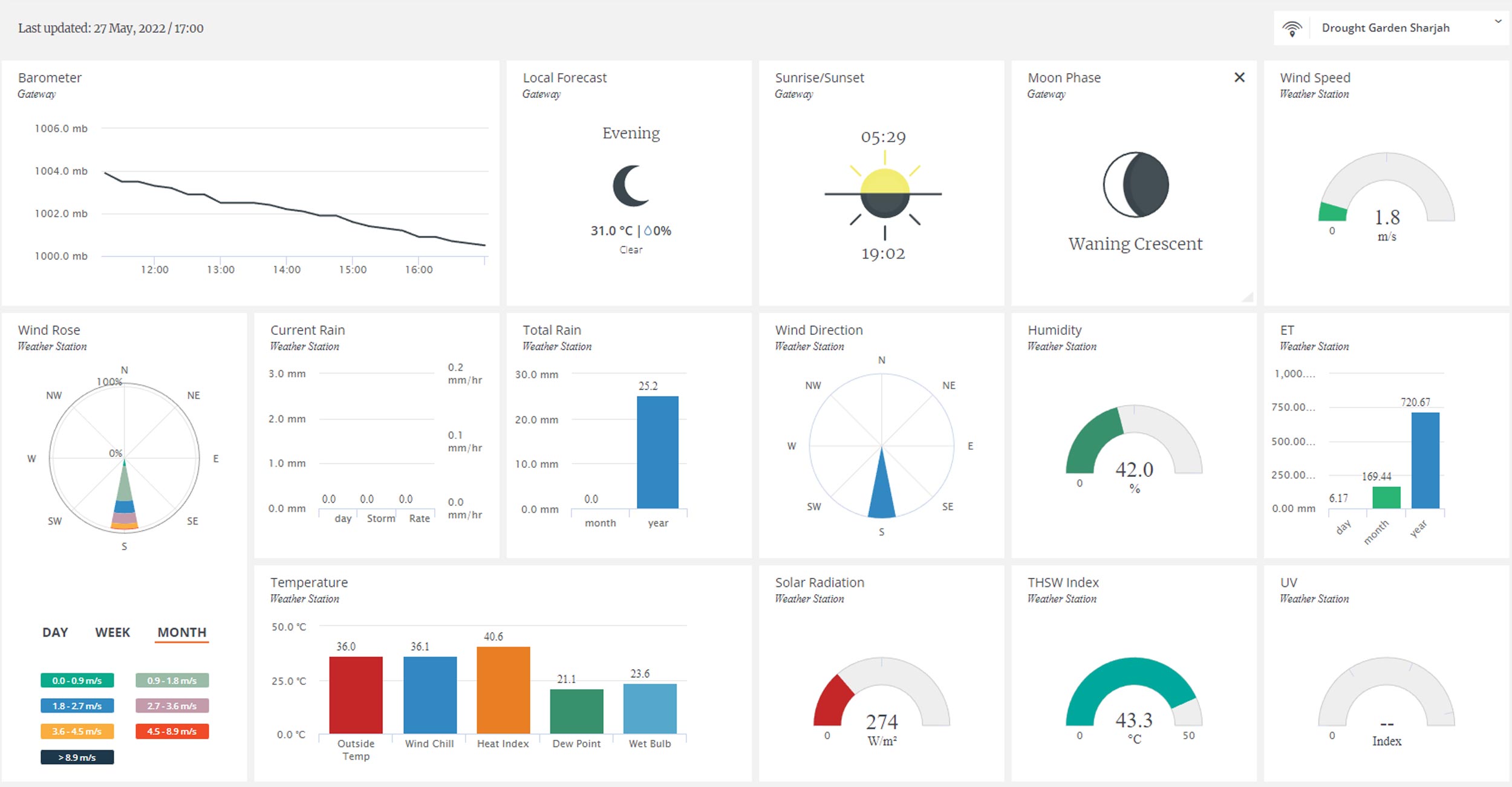
The use of renewable energy plays, and will continue to play, an important role considering the growing energy demand that will double by mid-century due to population and economic growth. In this context, large-scale photovoltaic (PV) systems offer great potential, but their massive deployment is leading to growing concerns about the loss of arable land and to a real land-use conflict between energy and food production.
In light of this conflict, the ‘agrivoltaic’ systems (AGRIculture + photoVOLTAIC – APV) can synergistically combine renewable energy and food production. It is also scientifically proven that the application of APV increase land productivity by up to 70 %, and that the growth of agricultural species in the shade of the APV is less affected by water scarcity because evapotranspirative flux is reduced.
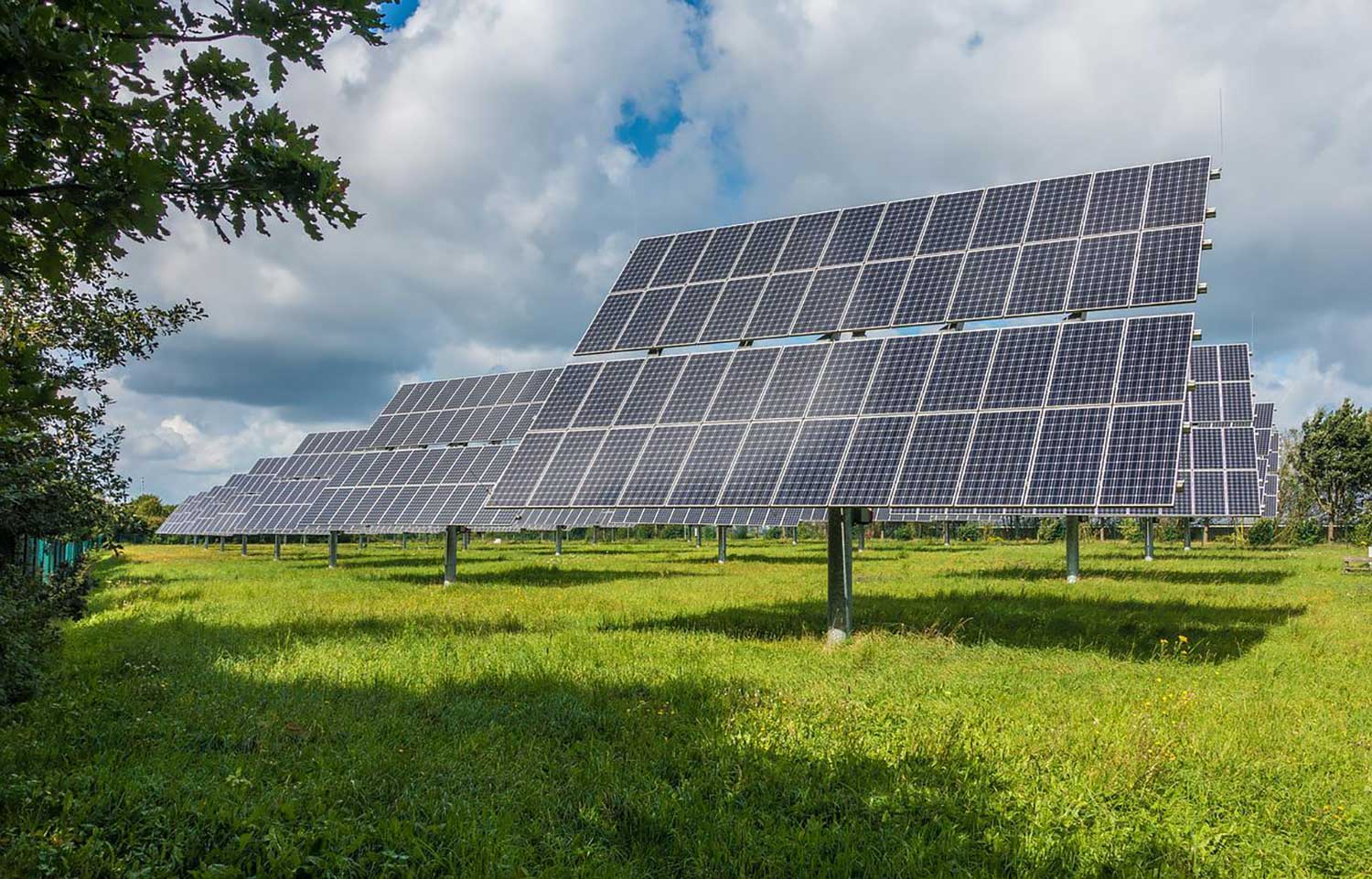
Agrivoltaics example.
The process of agricultural land conversion must therefore be controlled through accurate planning devoted to the values of agricultural heritage and landscape, and it has to apply the ‘do no significant harm’ principle under the Regulation (EU) 2021/241. In this perspective, by means of the multiphysics software tool ENVI-met, the effect of each individual APV scheme is considering the change of albedo, water content, soil moisture, and other microclimatic parameters such as air temperature and relative humidity and several indices of thermal comfort. The latter is of particular interest in an APV system where grazing is a destination use of the space underneath the panels, and animal wellbeing needs to be guaranteed.

Agrivoltaic assessment carried out in ENVI-Met.
Despite the demonstrated benefits, APV must consider the territorial conditions, not neglecting any specific requirements and checking compensations and mitigation interventions that could be adopted and that, precisely, relate to the context in which each project is proposed.
About Elisa Gatto.
Elisa is an environmental Biologist Consultant. She has a PhD in Biological and Environmental Sciences and Technologies from the University of Salento (Lecce, Italy). Her work and research activity are focused on three main themes: health, urban sustainability and land management.
